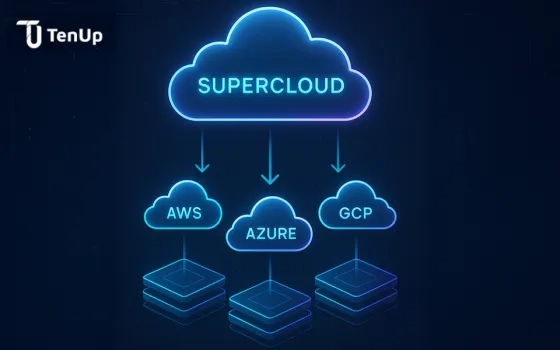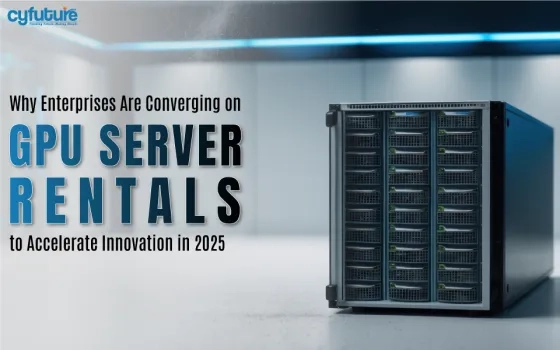This year and the last, COVID-19 caused a rapid increase in the digital transformation initiatives. Be it cloud computing firmly establishing itself as a ‘remote work enabler’ or multi-cloud and hybrid cloud helping organizations with the business continuity.
Seeing the benefits of cloud computing, more and more enterprises are now having a ‘cloud-first’ strategy i.e., they are preferring cloud solutions when they need new services.
Research indicates that investment in the cloud solutions will increase across industries. As per IDC, Cloud will account for more than US$ 1 trillion of all enterprise IT spending, by 2024.
Between all this planning and reaping benefits comes a very crucial step of cloud migration. Many organizations struggle with this step as they are wary of the challenges like overprovisioning, skills’ shortage, adoption issues and downtime.
To help you decide, we’ve listed 10 important things below that you should be aware of before jumping in for cloud migration.
1. Understand your cloud migration goals
Before planning a cloud migration, first ask yourself, “Why do you want to migrate your system to the cloud?”
Wrong Reasons:
- Because other companies, including your competitors, are doing this and you think it will beat the competition.
- Because you want simple experimentation with the cloud.
- Because some experts say that cloud migration will save money.
Right Reasons:
- Because cloud adoption will lead to faster infrastructure expansion, provide better uptime, and potentially speed up business growth.
- Because it will improve IT agility and will reduce your operational burden thereby enabling quicker response to the market changes.
- Because you want to improve the quality of the customer service and user experience.
- Because you want to improve security and operational resilience.
If you fall into the Right Reasons’ category, then you are headed in the right direction.
Cloud migration often provides better scalability, better agility, higher security, enables faster software development, and increases efficiency. However, each organization may need cloud for different reasons, for example, a finance company may need it to increase its computing power, greater scalability and cybersecurity.
You need to anticipate your needs first to get the right business value from cloud adoption.
2. Do some realistic assessment
A realistic estimate of the current state of your organization is essential as it will provide the basis that you will need when making important decisions.
You need to understand:
- Your current IT environment
- The current level of your resources
- Your application requirement, and
- Your overall budget for acquiring new resources
A thorough assessment of your existing infrastructure will help you determine the scope and scale of the migration.
You can assess better by answering the following questions:
• What type of storage devices do you use?
• How much storage space are you currently using?
• How much data is created daily in your organization?
• What type of database do you need?
• How sensitive is your business information?
• What types of data may need to be stored or processed in the cloud?
• How much money do you spend on your existing IT infrastructure? Would you continue to use the physical server afterwards?
3. Understand and control cloud costs
With the cloud, you are going to pay Opex (Operational Expenditure) majorly as the cloud solutions rarely need Capex (Capital Expenditure). You will need to pat for infrastructure in IaaS and applications in SaaS model as you use them. So, pricing can be calculated after calculating your requirements. Calculate and compare cloud costs with costs of your existing environment. The cost of cloud solutions will vary from one vendor to another. Research and find out different pricing for different cloud services of different vendors.
You can use a cloud comparison tool to make your research a bit easy.
It is very important to:
- Set a cloud budget
- Evaluate real cloud costs involved across departments, services and projects
- Identify areas to optimize cloud-related costs
4. Select the right deployment model
Cloud service providers mainly offer three types of deployment models:
- Infrastructure as a Service (IaaS)
- Platform as a Service (PaaS), and
- Software as a Service (SaaS)
Each one of them offers various features for management and control.
If you are looking for higher level of flexibility with your infrastructure, then you can choose the IaaS model. PaaS helps you improve your speed of delivering apps in the market. You can opt for the SaaS model to automate and speed up the deployment process. This reduces the need to control applications and provides greater flexibility.
Understand the differences between these deployment models and choose the one that best aligns with your needs.
5. Choose the right cloud environment
There are three main types of cloud environments, namely, private cloud, public cloud, and hybrid cloud. Below are the main features you need to consider before choosing one:
The Private Cloud The Public Cloud The Hybrid Cloud
1. It provides cloud computing resources which can be used exclusively by your organization.It provides cloud computing resources via the internet which is managed by your service provider.It provides a mix of both cloud infrastructures – private and public.
2. It provides better control and reliability.It is convenient to use.It is great for dynamic workloads.
3. It is customizable.It has low complexity.It has added complexity.
4. It is highly secure.It provides lesser security than the private cloud.It is secure.
5. It is expensive.It provides flexible pricing options.It is cost-effective.
You need to first understand your current IT environment and needs to choose the best cloud environment for your company.

6. Consider compliance and security
You need to know about the compliance and security aspects before starting the cloud migration process. You will need to create new policies that enable secure data sharing and protect data in the cloud, especially when you are in the finance or healthcare sector.
Be sure to ask your cloud migration partner how your business data will be processed, stored, and who will have access to it. These questions are typically addressed through a contractual agreement between the customer and the cloud service provider.
Here are a few questions you can ask:
• Where is the service provider’s data center located?
• How does the data center work and who can access it?
• What cyber security measures are used to prevent cyber-attacks?
• What steps are taken if a cyber security incident occurs?
7. Check your availability requirements
When you are moving to the cloud, you are getting a solution to all your issues related to downtime. Almost all cloud providers (indeed all) take care of uptime. Your cloud service provider will provide you with the best data backup, state of the art data center, restore solutions and more. It is a part of their cloud service. These features together contribute towards ensuring availability.
Before proceeding, make sure you define the value of your service availability with your advisor. Ask your cloud provider what guarantees your service availability? How much is the uptime? How effective is the recovery process?
Go for a service provider who guarantees a specific level of service availability.
8. Prepare your organization’s network
In order to efficiently use the cloud, it is important to ensure a fast and stable network connection. There are usually no fixed rules about how much bandwidth you will really need, but then if you use an application like Microsoft 365 for business, you should have at least 10 Mbps download speed and 1 Mbps upload speed per user.
9. Evaluate the cloud migration provider services
Before choosing a vendor, find out what kind of project experience your service provider has. It would be better if you find a partner who already has worked on a project that belongs to the same industry as yours. An experienced partner can smoothly help you craft a robust cloud migration strategy, even if you don’t have enough capabilities.

Also, look for any certifications your cloud migration advisor has and regulations he has complied with. Tech giants like Microsoft Azure, Alibaba Cloud, Amazon Web Services, etc., offer many certifications. Choosing a certified service provider can give you confidence that the partner is reliable and can provide effective cloud migration services.
Key areas for consideration:
• Certifications
• Experience
• Technology
• Service quality
• Business policy, SLA, contract duration, and data security
• Migration support
• Service termination policy
10. Leverage cloud service provider support
Lastly, make the best of your cloud provider’s services by using cloud support services. A good cloud support team can provide their expert services to meet your specific requirements, for example, installation, implementation, and backup and storage management.
In case, you have any issue, cloud support team can promptly answer your questions and resolve them.
Conclusion
You can get a lot of benefits using the cloud services for your business, but migration may not be an easy process. To make it easy, you need to have a reliable cloud service provider.
Another important point is to train your employees with the skills to use the cloud efficiently. This will ease the transformation to the cloud and will help you accomplish your cloud objectives effortlessly.
We hope this article will help you with your cloud migration. Once you’re through, share your cloud migration story in the comments section below.
If you have any concerns, discuss them with our experts in the chat section.
Originally Published in ZNetLive


















